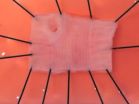(Press-News.org) An international team of sky scholars, including a key researcher from Johns Hopkins, has produced new maps of the material located between the stars in the Milky Way. The results should move astronomers closer to cracking a stardust puzzle that has vexed them for nearly a century.
The maps and an accompanying journal article appear in the Aug. 15 issue of the journal Science. The researchers say their work demonstrates a new way of uncovering the location and eventually the composition of the interstellar medium—the material found in the vast expanse between star systems within a galaxy.
This material includes dust and gas composed of atoms and molecules that are left behind when a star dies. The material also supplies the building blocks for new stars and planets.
"There's an old saying that 'We are all stardust,' since all chemical elements heavier than helium are produced in stars," said Rosemary Wyse, a Johns Hopkins professor of physics and astronomy who played a prominent role in the research and helped shape the Science paper. "But we still don't know why stars form where they do. This study is giving us new clues about the interstellar medium out of which the stars form."
In particular, the researchers focused on a mysterious feature in the light from stars, a peculiarity called diffuse interstellar bands, or "DIBS." A graduate student who photographed the light from distant stars discovered these dark bands in 1922.
Analyzing rainbow-colored bands of starlight that have passed through space gives astronomers important information about the makeup of the space materials that the light has encountered. But in 1922, the grad student's photographs yielded some dark lines indicating that some starlight was "missing'' and that something in the interstellar medium between Earth and the star was absorbing the light.
Since then, scientists have identified more than 400 of these diffuse interstellar bands, but the materials that cause the bands to appear and their precise location have remained a mystery.
Researchers have speculated that the absorption of starlight that creates these dark bands points to the presence of unusually large complex molecules, but proof of this has remained elusive. The nature of this puzzling material is important to astronomers because it could provide clues about the physical conditions and chemistry of these regions between stars. Such details serve as critical components in theories as to how stars and galaxies are formed.
Wyse said more concrete clues should emerge from the new pseudo-3D maps of the DIB-material within our Milky Way Galaxy, maps that were produced by the 23 scientists who contributed to the Science article.
The maps were assembled from data collected over a 10-year period by the Radial Velocity Experiment, also known as RAVE. This project used the UK Schmidt Telescope in Australia to collect spectroscopic information from the light of as many as 150 stars at once. The maps are described as "pseudo-3D" because a specific mathematical form was assumed for the distribution in the vertical dimension that provides the distances from the plane of the Milky Way, with the maps presented in the remaining two dimensions.
Wyse, who is on the executive board of the RAVE project, said the survey supplied the mapmakers with data related to 500,000 stars. The vast size of the sample enabled the mapmakers to determine the distances of the material that causes the DIBs and thus how the material is distributed throughout the Milky Way Galaxy. The resulting maps showed the intriguing result that the complex molecules thought to be responsible for the DIBs are distributed differently than another known component of the interstellar medium – the solid particles known as dust – also traced by the RAVE survey.
Future studies can use the techniques outlined in the new paper to assemble other maps that should further solve the mysteries surrounding where DIBS are located and what materials cause them. "To figure out what something is, you first have to figure out where it is," Wyse said, "and that's what this paper does. Larger surveys will provide more details in the future. This paper has demonstrated how to do that."
INFORMATION:
Janez Kos and Tomaz Zwitter of the University of Ljubljana in Slovenia led the astronomy team that produced this paper. Wyse was the third author listed on the paper.
A portion of the funds for this project came from U.S. National Science Foundation grant AST-0908326.
RAVE is a multinational project with participation of scientists from Australia, Germany, France, UK, Italy, Canada, the Netherlands, Slovenia and the USA, coordinated by the Leibniz Institute for Astrophysics Potsdam (AIP), Germany. Funding of RAVE, which guarantees extensive data, telescope and instrument access is provided by the participating institutions and the national research foundations.
Photo of Professor Wyse available; contact Phil Sneiderman.
Related links:
RAVE Survey Website: http://www.rave-survey.org
Online video of stars observed by RAVE:
http://www.rave-survey.aip.de/rave/movies/ravedr4_anim.mp4
Rosemary Wyse's Website:
http://physics-astronomy.jhu.edu/directory/rosemary-f-g-wyse/
Henry A. Rowland Dept. of Physics and Astronomy at Johns Hopkins:
http://physics-astronomy.jhu.edu/
Zanvyl Krieger School of Arts & Sciences at Johns Hopkins: http://krieger.jhu.edu/
New Milky Way maps help solve stubborn interstellar material mystery
2014-08-14
ELSE PRESS RELEASES FROM THIS DATE:
CF mucus defect present at birth
2014-08-14
VIDEO:
This is a 3-D reconstruction from time-lapse CT-scans of a CF pig lung. Images show the trachea and bronchi. Colored round dots represent positions of particles that were...
Click here for more information.
Mucus is key to keeping our lungs clean and clear of bacteria, viruses, and other foreign particles that can cause infection and inflammation. When we inhale microbes and dust, they are trapped in the mucus and then swept up and out of the lungs via a process called ...
Potential drug therapy for kidney stones identified in mouse study
2014-08-14
Anyone who has suffered from kidney stones is keenly aware of the lack of drugs to treat the condition, which often causes excruciating pain.
A new mouse study, however, suggests that a class of drugs approved to treat leukemia and epilepsy also may be effective against kidney stones, researchers at Washington University School of Medicine in St. Louis report.
The drugs are histone deacetylase inhibitors, or HDAC inhibitors for short. The researchers found that two of them — Vorinostat and trichostatin A — lower levels of calcium and magnesium in the urine. Both calcium ...
Broader organ sharing won't harm liver transplant recipients
2014-08-14
New research shows that broader sharing of deceased donor livers will not significantly increase cold ischemia time (CIT)—the time the liver is in a cooled state outside the donor suggesting that this is not a barrier to broader sharing of organs. However, findings published in Liver Transplantation, a journal of the American Association for the Study of Liver Diseases and the International Liver Transplantation Society, do indicate that broader sharing of organs will significantly increase the percentage of donor organs that are transported by flying rather than driving. ...
Scientists study 'talking' turtles in Brazilian Amazon
2014-08-14
AUDIO:
These are vocalizations made between adults and hatchlings (individual sounds repeated for the listener's benefit).
Click here for more information.
Turtles are well known for their longevity and protective shells, but it turns out these reptiles use sound to stick together and care for young, according to the Wildlife Conservation Society and other organizations.
Scientists working in the Brazilian Amazon have found that Giant South American river turtles actually ...
Scientists fold RNA origami from a single strand
2014-08-14
RNA origami is a new method for organizing molecules on the nanoscale. Using just a single strand of RNA, many complicated shapes can be fabricated by this technique. Unlike existing methods for folding DNA molecules, RNA origamis are produced by enzymes and they simultaneously fold into pre-designed shapes. These features may allow designer RNA structures to be grown within living cells and used to organize cellular enzymes into biochemical factories. The method, which was developed by researchers from Aarhus University (Denmark) and California Institute of Technology ...
New analysis links tree height to climate
2014-08-14
MADISON, Wis. — What limits the height of trees? Is it the fraction of their photosynthetic energy they devote to productive new leaves? Or is it their ability to hoist water hundreds of feet into the air, supplying the green, solar-powered sugar factories in those leaves?
Both factors — resource allocation and hydraulic limitation — might play a role, and a scientific debate has arisen as to which factor (or what combination) actually sets maximum tree height, and how their relative importance varies in different parts of the world.
In research to be published in ...
New gene editing method shows promising results for correcting muscular dystrophy
2014-08-14
DALLAS – August 14, 2014 – UT Southwestern Medical Center researchers successfully used a new gene editing method to correct the mutation that leads to Duchenne muscular dystrophy (DMD) in a mouse model of the condition.
Researchers used a technique called CRISPR/Cas9-mediated genome editing, which can precisely remove a mutation in DNA, allowing the body's DNA repair mechanisms to replace it with a normal copy of the gene. The benefit of this over other gene therapy techniques is that it can permanently correct the "defect" in a gene rather than just transiently adding ...
9/11 dust cloud may have caused widespread pregnancy issues
2014-08-14
Pregnant women living near the World Trade Center during 9/11 experienced higher-than-normal negative birth outcomes, according to a new working paper by Princeton University's Woodrow Wilson School of Public and International Affairs.
These mothers were more likely to give birth prematurely and deliver babies with low birth weights. Their babies - especially baby boys - were also more likely to be admitted to neonatal intensive care units after birth. The study, led by the Wilson School's Janet Currie and Hannes Schwandt, was released by the National Bureau of Labor ...
Reduced testosterone tied to endocrine-disrupting chemical exposure
2014-08-14
Washington, DC—Men, women and children exposed to high levels of phthalates - endocrine-disrupting chemicals found in plastics and some personal care products – tended to have reduced levels of testosterone in their blood compared to those with lower chemical exposure, according to a new study published in the Endocrine Society's Journal of Clinical Endocrinology & Metabolism (JCEM).
Testosterone is the main sex hormone in men. It contributes to a variety of functions in both sexes, including physical growth and strength, brain function, bone density and cardiovascular ...
Vitamin D Deficiency May Reduce Pregnancy Rate in Women Undergoing IVF
2014-08-14
Washington, DC—Women with a vitamin D deficiency were nearly half as likely to conceive through in vitro fertilization (IVF) as women who had sufficient levels of the vitamin, according to a new study published in the Endocrine Society's Journal of Clinical Endocrinology & Metabolism (JCEM).
Long known for its role in bone health, vitamin D is a steroid hormone that is emerging as a factor in fertility. Animal studies have shown that the hormone, which is produced in the skin as a result of sun exposure as well as absorbed from some fortified foods, affects fertility ...




